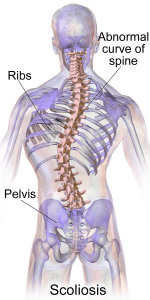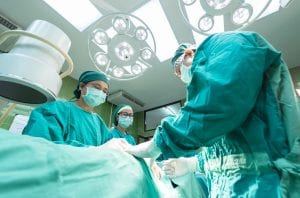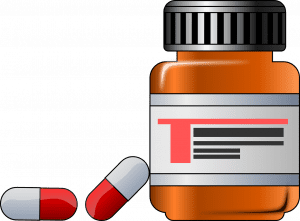Epigenetics Shows Idiopathic Scoliosis May not be so Idiopathic
 When we, as medical professionals, don’t know how or why a disease develops, we say it is idiopathic.
When we, as medical professionals, don’t know how or why a disease develops, we say it is idiopathic.
For example, when adolescents develop scoliosis, it is called “adolescent idiopathic scoliosis.” This is a condition that is more than a passing interest for me. You see, my mom was diagnosed in adolescence and two of my daughters were diagnosed.
I, too, was diagnosed with scoliosis, but it wasn’t adolescent idiopathic scoliosis. My scoliosis developed in adulthood. My chiropractor in Georgia said it was due to having six children in ten years and always having a baby on my hip. My scoliosis was corrected fairly easily and quickly with a combination of chiropractic care and physical therapy.
I wish all scoliosis cases were so easily corrected.
My family, the combined three generations affected, has spent well over $600,000 in treatments ranging from chiropractic to full spinal fusions. I watched my mother and my third born daughter endure the spinal fusions. It broke my heart to see them go through such an ordeal. Hence my passion for figuring out this so-called “idiopathic scoliosis.”

When my daughter was at Children’s Hospital in Denver, my whole family was enrolled in a study to look at genetic connections to scoliosis. Being a Functional Epigenetic Nutritionist, I was intensely interested in the genes they are studying. In talking with the research assistant, I discovered they weren’t looking at the same genes that I study. But, that didn’t keep me from continuing my studies.
One interesting thing I learned is how we approach adolescent idiopathic scoliosis and how it is approached in Hong Kong is different. In Hong Kong, children are given bone density scans. Those scans show poor bone density. That means the bones are poorly mineralized. In the U.S., we don’t test bone density on children.
I asked about bone density testing for my daughter as she went through various treatments, the answer I always got was, “we don’t test children’s bone density.” Hmmm…
As I continue my dive into the world of epigenetics and the implications of variations within the genome, I research associated conditions. Well, this week has been a EUREKA moment for me! I’ve found two genes, MTR and MTRR, will manifest as scoliosis and osteoporosis, among other things.
Of course, I immediately looked at my daughter’s epigenetic profile–and there it was, plain as day, distinct pattern of variants affecting those two genes. Now, I have some more research to do with my other family members that have scoliosis diagnosis. And, you can bet, I’ll be contacting the researcher in Denver about my findings.
Here’s the thing, it is entirely possible to support these genetic weaknesses with diet and supplements and to have prevented the manifestation of disease in the first place. Let that sink in.
 We’ve spent $600,000 on treatments when a $40 bottle/month supplement may have erased the risk. That’s a painful yet encouraging thought. It’s painful to think of the money that was spent, and the pain my family members went through. It’s encouraging regarding the prevention of scoliosis for the next generation of females in my family.
We’ve spent $600,000 on treatments when a $40 bottle/month supplement may have erased the risk. That’s a painful yet encouraging thought. It’s painful to think of the money that was spent, and the pain my family members went through. It’s encouraging regarding the prevention of scoliosis for the next generation of females in my family.
I’ll keep looking reasons the disease develops in my family in hopes of helping the next generation.
To your health!
Image of scoliosis credit: Blausen.com staff (2014) “Medical gallery of Blausen Medical 2014.”
